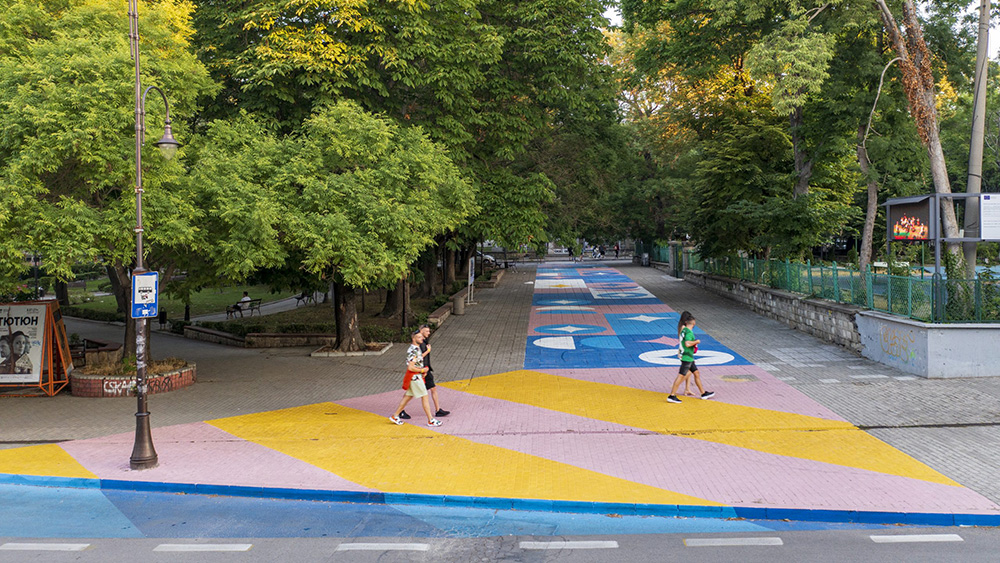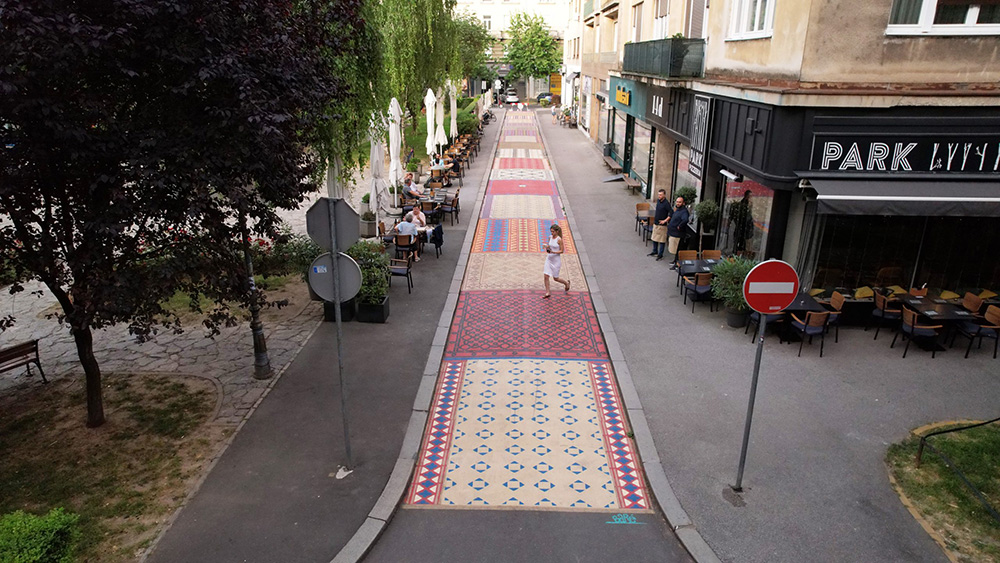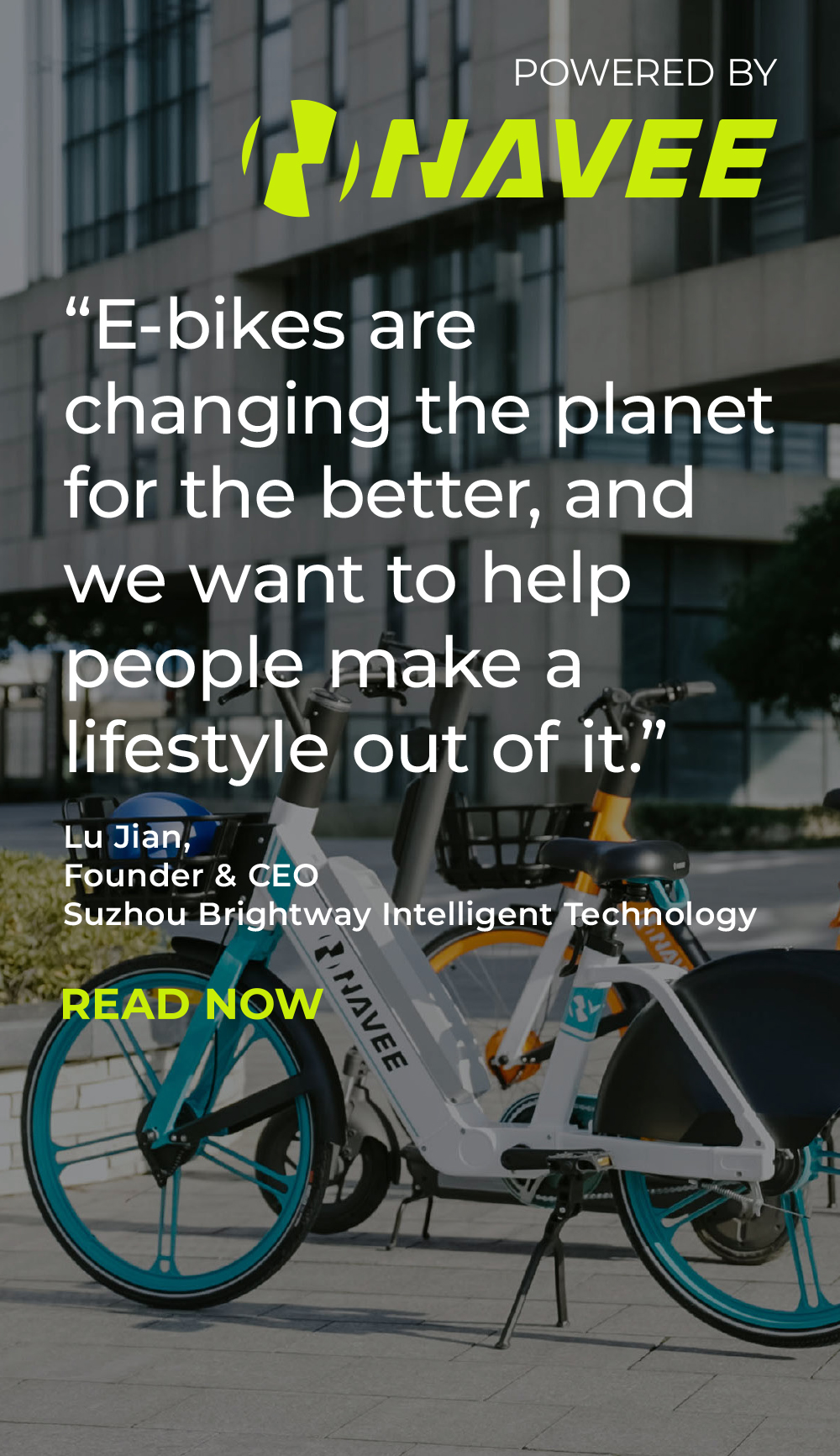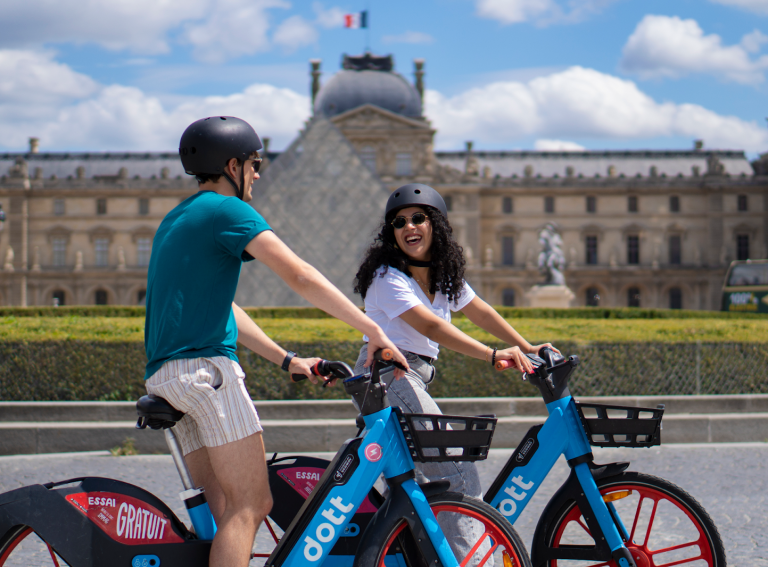Photo by Bloomberg Philanthropies
The Asphalt Art Initiative is Bloomberg Philanthropies’ response to cities eager to use art as an effective, low-cost strategy to transform their streets.
With pedestrian deaths at a 40-year high in the United States, David Andersson from the Arts Team at Bloomberg Philanthropies, says: “These projects feel more urgent than ever. We are demonstrating that asphalt art projects work and have real, meaningful, and measurable safety impacts.”
A collaboration between the philanthropy’s arts and transportation teams, the Initiative defines asphalt art as visual interventions on roadways, pedestrian spaces, and even vertical infrastructure. The idea behind the intervention is simple: vibrant colours make pedestrian spaces more visible, especially when paired with other safety improvements, but the psychology of its effects goes deeper.
“Adding colour to the asphalt makes it extremely clear that this is space for the pedestrian, but I think another layer is also the psychology of it,” says Andersson. “Art makes the space feel used, loved and cared for. It signals to drivers that the street is not designed just for cars – but for people.”


The origins of the Asphalt Art Initiative date back to when Mike Bloomberg was in office as Mayor of New York City. In 2009, the Commissioner of the New York City Department of Transportation at the time, Janette Sadik-Khan, blocked off vehicle access to Broadway in Times Square to establish temporary areas exclusively for pedestrians, which included a large public mural. The outcome was so positive that the city opted to formalise this change as a permanent measure, along with hundreds of similar safety projects around the five boroughs.
Andersson has been around to see these efforts grow. An artist himself, he worked for the NYC Department of Cultural Affairs under Commissioner Kate D. Levin to provide the arts as a public service during Bloomberg’s tenure as Mayor.
Today, he works closely with Nicholas Mosquera from Bloomberg Associates’ Transportation Team, led by Janette Sadik-Khan, to bring artists and engineers together. They are adapting what they learned in New York City to make it accessible to cities around the world. In 2014, they started exporting the idea of asphalt art to cities such as Bogota, Athens, Detroit, Oakland, and Milan through their consulting.
In 2019, Bloomberg Associates joined with tactical urbanism firm Street Plans to create the free Asphalt Art Guide to keep cities from reinventing the wheel each time they start a new project.
The Asphalt Art Initiative grant programme takes the support a step further. The programme accepts a limited number of cities each round into a cohort which goes through the process of installing their projects together. So far, 64 projects were implemented throughout the United States and Europe from 2020 to 2023, and the next round of North American cities will be announced this fall.
Results are starting to emerge from the initial projects. “Our safety study of 22 projects found that after the asphalt art was installed, there was a 50% decrease in the rate of crashes involving pedestrians or cyclists and a 27% increase in the rate of drivers yielding to pedestrians who had the right of way.”
Andersson is full of tips about the technical side of the projects, from avoiding installation when even the slightest bit of rain is present, to the importance of the asphalt’s quality and the type of paint used.
However, he says the project’s biggest learning has been in community engagement.
“The best asphalt art projects bring community members into every step of the process – from identifying which streets in their neighbourhood are most in need of improvement to actually helping design the final mural.
“Most people don’t get the chance to help shape the way their streetscapes look. This is really an opportunity for civic engagement at its fullest. It goes beyond just surveys. Sometimes there are design workshops with community members where they work together with artists to test out ideas. The best projects come from the community. They’re not imposed on the community.”
Andersson recounts a story passed along to him by artist George Bates as he painted asphalt art in Trenton, New Jersey. The crosswalk mural incorporated the profile of students who participated in the design workshops.
“One of the kids came by with his mom to see it as it was being painted. The artist urged the mother to go on the stepstool to see it more fully. Once she got up onto the ladder, she realised it was a portrait of her child. It was very personally meaningful to her seeing her family represented in the public art in their community.”
While the safety aspects are the core of this initiative, the personal and communal impacts are felt by people living in neighbourhoods where these investments are made.
As art projects from 2020 have begun to run their usable lifespan, some are being made into permanent street infrastructure. In Kansas City, the asphalt art project used temporary curb extensions to slow down traffic and increase drivers to give pedestrians the right of way. The average speed at the intersection dropped by 45%. Three years later, the curb extension is becoming permanent and will be filled in with concrete.
The outcomes are a testament to the effectiveness of these efforts. Andersson is focused on disseminating this information, explaining: “We’re compiling this information and sharing the best practices of this kind of innovative approach to improving our streets as far as and wide as we can.”






